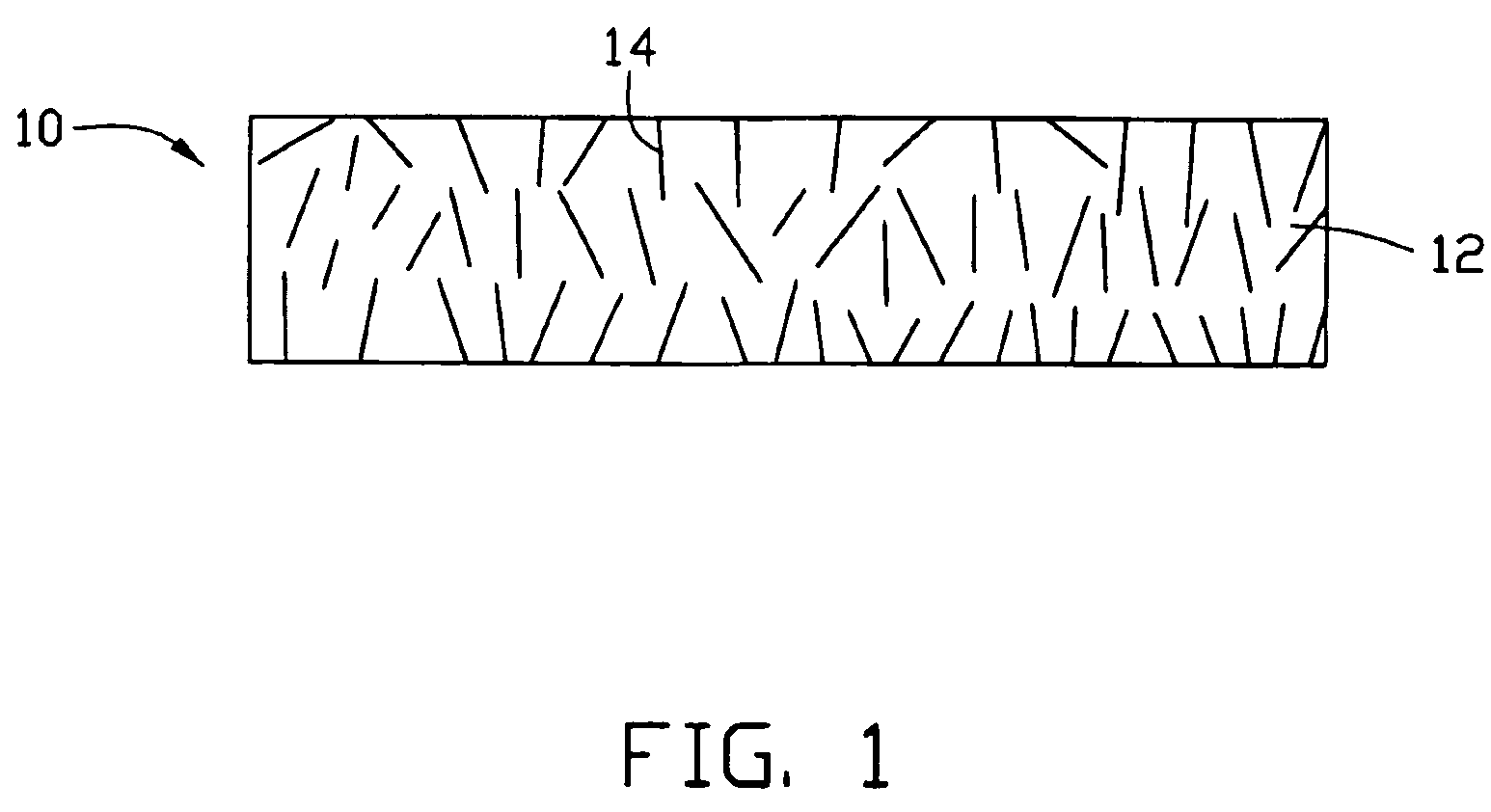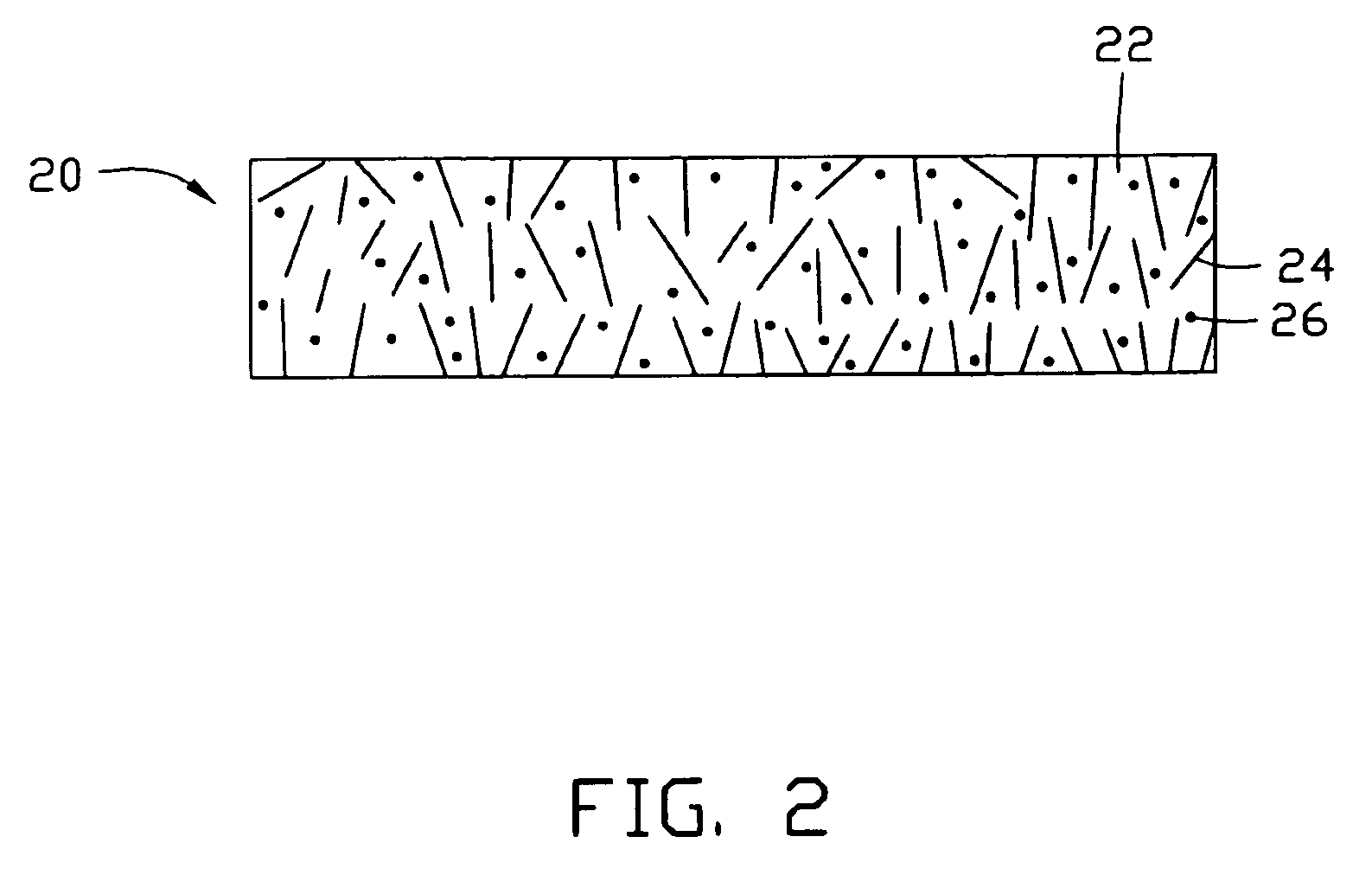Thermal interface structure and process for making the same
a technology of thermal interface and thermal interface structure, which is applied in the direction of semiconductor devices, electrical devices, semiconductor/solid-state device details, etc., can solve the problems of reducing the flexibility of the base material, affecting the heat dissipation efficiency between the electronic component and the cooling device, and the type of thermal interface structure can only be manufactured at high cos
- Summary
- Abstract
- Description
- Claims
- Application Information
AI Technical Summary
Benefits of technology
Problems solved by technology
Method used
Image
Examples
Embodiment Construction
[0020] Reference will now be made to the drawings to describe embodiments of the present thermal interface structure and its method of manufacture in detail.
[0021] Referring to FIG. 1, a thermal interface structure 10 in accordance with a preferred embodiment of the present thermal interface structure is shown. The thermal interface structure 10 is generally adapted for being disposed between electronic components (not shown) such as central processing units (CPUs), and cooling devices (not shown) such as heat sinks, to dissipate heat generated by the electronic components. The thermal interface structure 10 comprises a matrix 12 and a plurality of carbon nanotubes 14 incorporated in the matrix 12.
[0022] The matrix 12 is made from a phase change material with a solid to liquid phase-change temperature in the range of 50° C.˜60° C. (e.g. paraffin material). The nanotubes 14 are dispersed in the matrix 12 randomly. Preferably, the percent by mass of the nanotubes 14 is in the range ...
PUM
| Property | Measurement | Unit |
|---|---|---|
| temperature | aaaaa | aaaaa |
| thickness | aaaaa | aaaaa |
| percent by mass | aaaaa | aaaaa |
Abstract
Description
Claims
Application Information
 Login to View More
Login to View More - R&D
- Intellectual Property
- Life Sciences
- Materials
- Tech Scout
- Unparalleled Data Quality
- Higher Quality Content
- 60% Fewer Hallucinations
Browse by: Latest US Patents, China's latest patents, Technical Efficacy Thesaurus, Application Domain, Technology Topic, Popular Technical Reports.
© 2025 PatSnap. All rights reserved.Legal|Privacy policy|Modern Slavery Act Transparency Statement|Sitemap|About US| Contact US: help@patsnap.com



